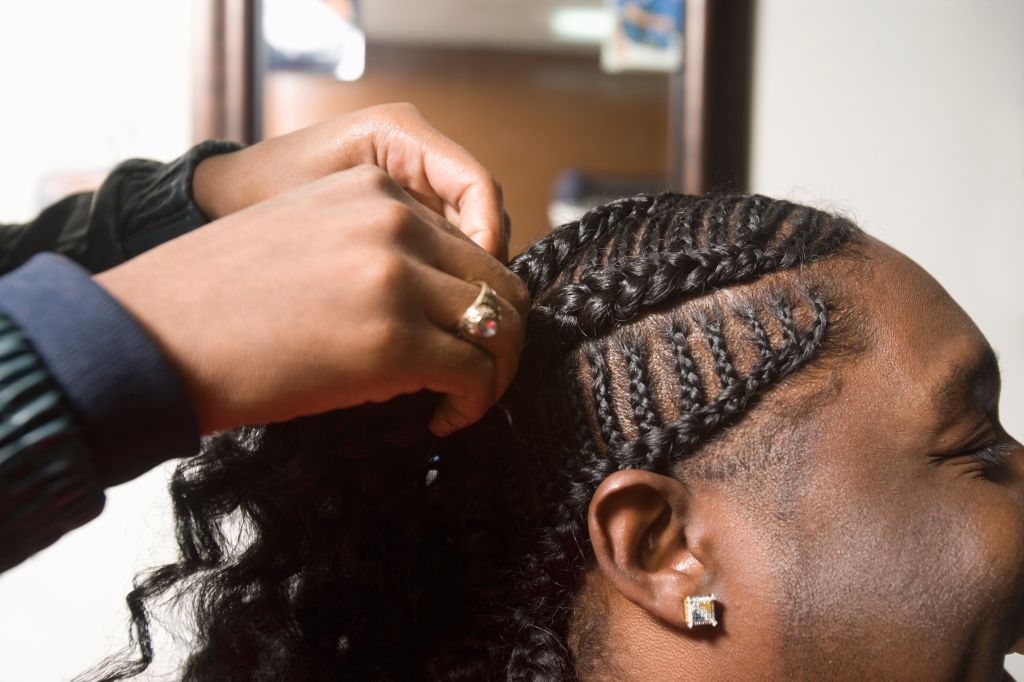
Source: Moodboard Stock Photography Ltd. / Getty
Wondering how to get your crown to flourish like the fellas in our Exploring Our Roots rollout? Look no further. Here’s your jumpstart guide to healthier locs.
Shampoo Less
Shampooing daily can really dry out your hair. It can especially become an issue if you’ve got a thick and kinky crown, since your scalp’s natural oils have a harder time making it down the length of your strands. You can negate this by shampooing no more than once a week (and as minimally as once every two to three weeks). We realize this may make some crawl in their skin, but read on.
Consider Co-Washing
This is one of those terms you’ve probably heard your homegirl use, particularly if she’s a self-proclaimed “naturalista.” Co-washing is the art of washing your hair with conditioner. If you can’t wrap your head around skipping your daily lather, then massaging your scalp with conditioner while you’re in the shower could be your new go-to. It’s a good way to gently cleanse your hair and scalp while maintaining moisture (i.e. not stripping your hair of its natural oils). Any conditioner will do, but they also formulate products specifically for co-washing.
Some recommendations:
- As I Am Naturally Coconut CoWash Cleansing Conditioner – $9, AsIAm.com
- Ouidad Low-Lather Coconut Cleansing Conditioner – $36, Ouidad.com
- Palmer’s Olive Oil Formula Cleansing Conditioner – $10, Walgreens.com
Moisturize More
You’re not done after you wash and condition. After stepping into the shower, make sure you’re locking in moisture with a leave-in product, sealing with an oil, or both. You can also moisturize between washes if your strangs start feeling a little crunchy.
Bonus tip:
Try a deep conditioner.
Use the Right Products
This means not using your bar soap as a shampoo. Instead, look for products formulated to work specifically for your hair, while aiming for those free of sulfates, parabens and silicones. And you know all that talk about “hair type” in the women’s natural hair community? Well, it applies to you, too. Knowing your hair type helps you choose products that will nourish your hair to its highest potential. Are you a 3 type? A 4 type? Low-porosity? High-porosity?
Allow us to break it down:
- Type 1 – Straight hair that doesn’t bend and lies flat against the head.
- Type 2 – Wavy hair that grows in an “S” pattern. Can be fine or coarse.
- Type 3 – Curly hair with a more loose or corkscrew shape. While the coils are more defined than Type 4 hair, it’s also susceptible to frizz.
- Type 4 – Kinky, afro-textured hair with small, tight coils that start right from the scalp.
- Hair Porosity – The measurement of hair’s ability to absorb and retain moisture. The more tightly bound your hair cuticle (i.e. the lower porosity your hair has), the more difficult it will be for moisture to penetrate it. There’s low, medium, and high porosity hair, and the type you have will determine what sort of products you use (e.g. high porosity hair can handle heavy hair butters with less chance of buildup). You can see which type you have with a simple hair test.
A lesson from the ladies:
Eat Mindfully
It sounds cliché as hell, but you really are what you eat. Stay hydrated, eat right, and watch your roots prosper, fam. Oh, and make sure you exercise.
Some links to get you started:
- Healthy Recipe Books to Help You Stay Summertime Fine
- 2018 Wellness Expert Guide
- Flexin’ On ‘Em: 10 Exercises That Will Change Your Life
Lastly, follow all this advice for your beard as well, and thank us later.
















